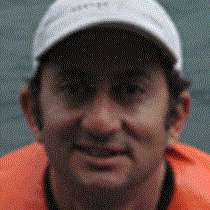Isabela Island
The site we visited this morning was uplifted in 1954, an event which was coincidentally recorded by some of the very few humans who roamed these waters during that time. Today, while walking along the path in Urbina Bay, one mile from the breaking waves, there were rounded rocks, piled and ground up by the power of the Pacific Ocean. Amongst the materials unearthed by nesting land iguanas, we could find sea shells of all sizes, urchin spines, and tubeworm remains still attached to lava rocks, now exposed to the air and direct sunlight; big coral heads protruding out of the ground, bleached by the equatorial sun…all far away from the sea, and surrounded by green vegetation.
Uplifts are frequent geological features on oceanic shield volcanoes, part of the islands’ formation process. Nevertheless, this visitor site never ceases to be incredibly fascinating and particularly strange, being now a lair of the reptilian, where giant tortoises, land iguanas, lava lizards and marine iguanas roam instead of sharks, rays, fish, octopi…the old tenants of this land.
As the warm, wet season has peaked, the last weeks of rain will fade away, the very active Darwin’s finches, yellow warblers, Large billed flycatchers and Galápagos mockingbirds will have to deal with a much different, harder world; a place where the mating calls, the feeding of the chicks, and the breeding behavior we witnessed today, will also end until the end of the year.
Tagus Cove, in the afternoon, the best anchorage of the western islands. The spot, used by whalers for many years is full of endemic creatures: Galápagos penguins, flightless cormorants, Darwin’s finches, marine iguanas…snorkeling with penguins, seeing them while kayaking has to be one of the most amazing Galápagos experiences. And that is the distinctive feature of our islands: we don’t observe things, we experience them.
We finished our day with a power walk to a viewpoint of Northern Isabela, through the dry forest and with a view of Darwin’s Lake. The raw beauty of the islands, the harsh environment that chisels the organisms living on it, and the lava flows that isolate each volcano reminds us of the real Galápagos, the archipelago that changed a young scientist mind, a person who was also lucky to witness these ecosystems, experiences that changed the way we relate to our beautiful planet.
And thus another day has ended, another full day in paradise.




